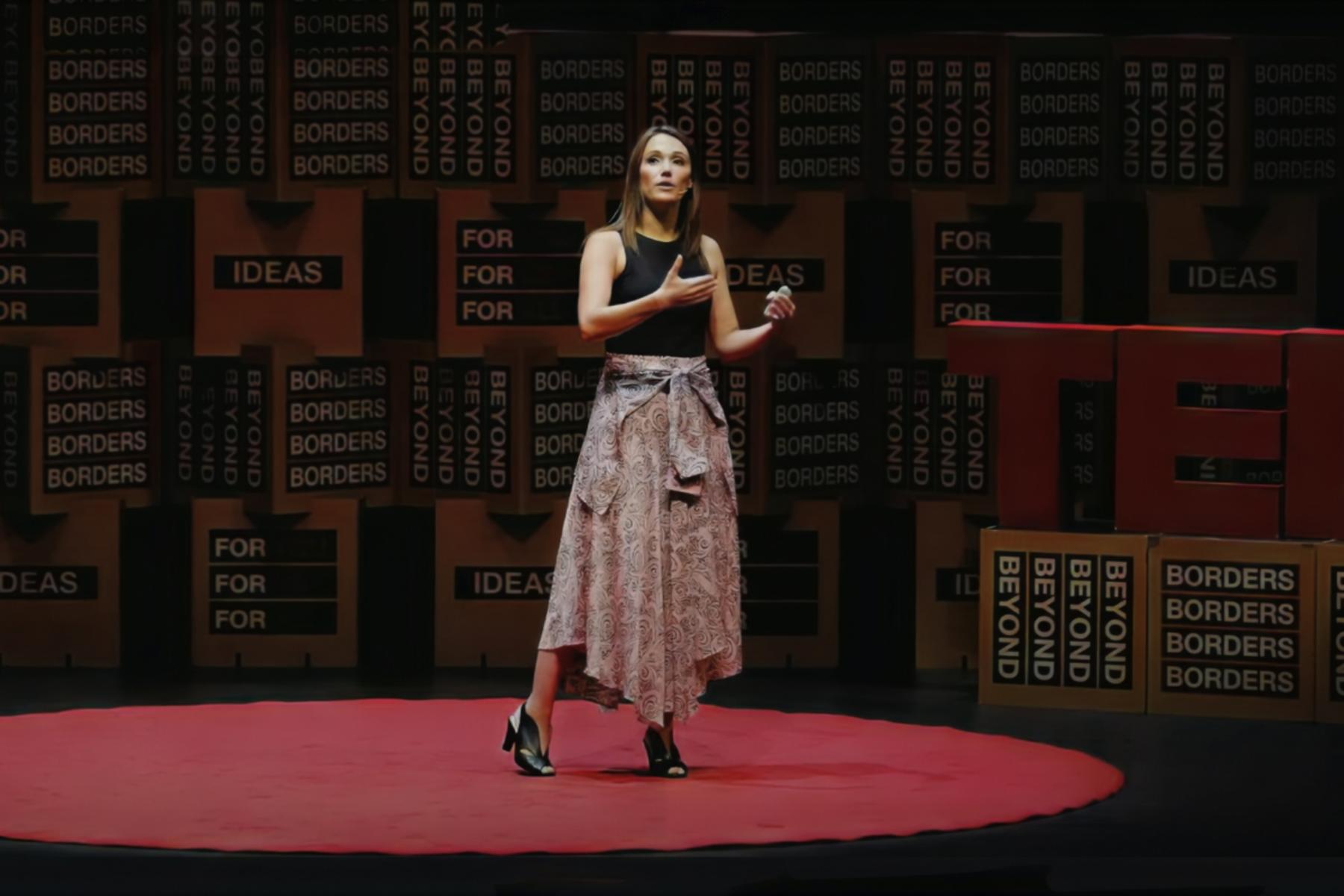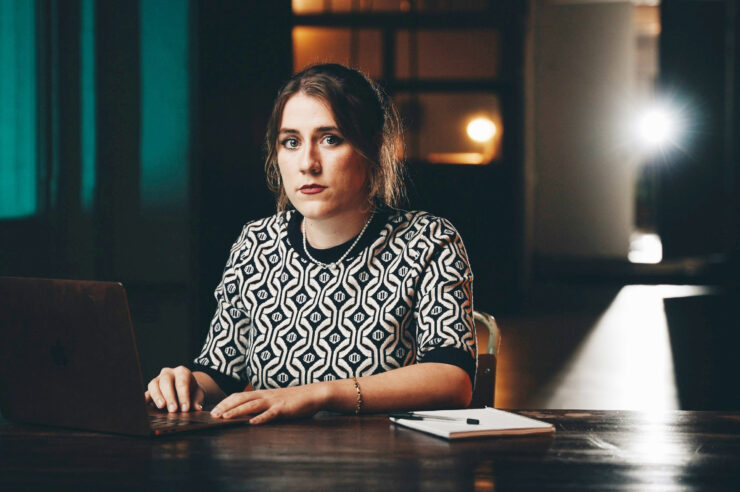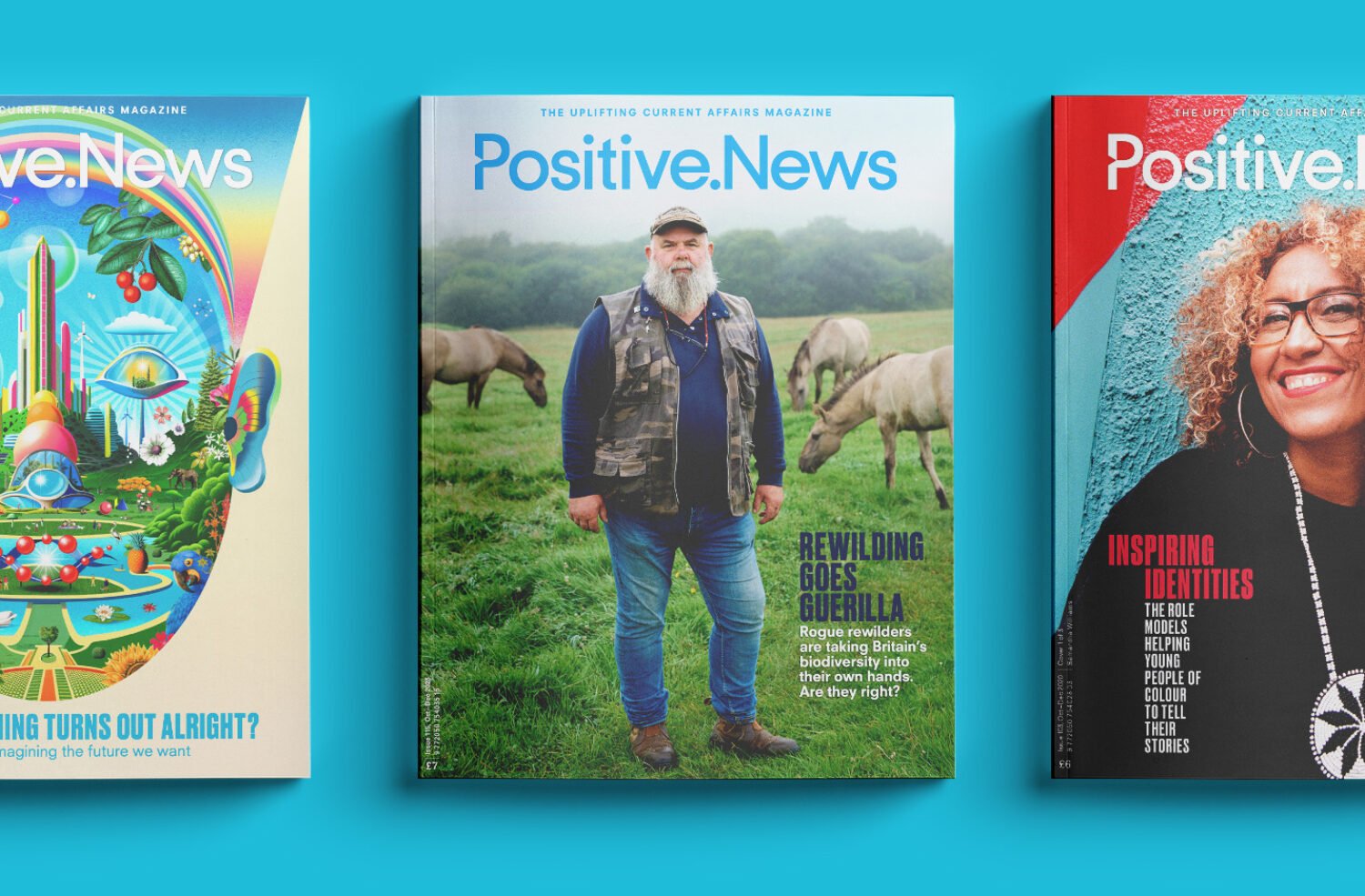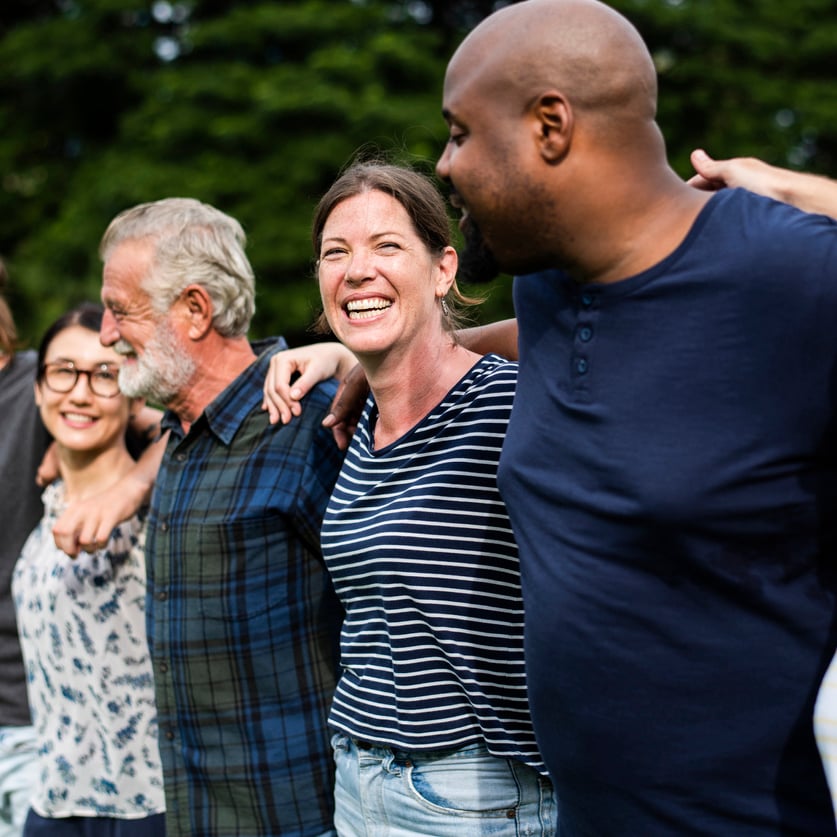Successfully navigating the news is an increasingly urgent life skill, says the founder of a project that is teaching young people to do just that
“If I don’t read the newspaper, I’m uninformed. If I read the newspaper, I’m misinformed.” These words, which are often attributed to Mark Twain but were actually probably not his after all, in any case capture a curiously up-to-date challenge: how do we stay informed about what’s happening in the world, without being overwhelmed by it – and how on earth can we even trust what we’re reading, hearing or seeing if we do engage?
The answer, according to Jodie Jackson – founder of the News Literacy Lab – is to equip yourself with tools needed, rather than leaving it to chance. News literacy today, she points out, must go far beyond just spotting fake news. The project’s new education programme is therefore ambitious in scope, teaching young people aged between 14-18 much more than how to simply treat the symptoms of a polluted system.
An important part of its focus is on the impact of solutions journalism as an antidote to the misrepresentation created by the media’s negativity bias.
As the project’s first findings are published this week in a report called Navigating News, Nurturing Hope, we ask Jackson, a mother-of-three, why focusing on solutions felt so important. As she puts it: “We must develop the necessary skills to stand guard at the doors of our own minds. Our individual wellbeing – and the wellbeing of the world – depends on it.”
Why did you set up the News Literacy Lab now?
When the pandemic hit, I had two small children. Despite spending over a decade researching how the negativity bias in the news affects our mental and societal health and promoting solutions journalism, I realised I couldn’t be an effective mediator between my children and the information they’re exposed to. I realised that my children needed the necessary skills to navigate the news at a much younger age than I did, and I wanted to pass on what I had learned to them.
So, I decided to write a children’s book and started creating resources for parents and teachers. These resources are rooted in the principles of positive psychology and a growth mindset, and are designed to help kids engage with the problems they hear about in the news in a constructive way, with empathy, resilience and hope.
It was around then that I realised my work was essentially about news literacy. However, it didn’t quite fit into the traditional mould of news literacy education, which often focuses on teaching young people how to spot and stop fake news. While that’s important, I also wanted to help students understand other factors that contribute to a misinformed worldview, such as the negativity bias in news reporting, the fast pace of news production, the algorithmic priorities of online platforms, and the way our own minds work.
So, I founded this organisation to provide a more comprehensive approach to news literacy, one that equips young people with the tools to navigate the complex media landscape we live in today.

Children as young as eight regularly use social media, according to Ofcom. Image: Andrea Piacquadio
How is your educational programme different to what’s come before?
Solutions journalism is one of the distinguishing features. The negativity bias is a large contributor to us being misinformed. The overwhelming prioritisation of problems creates a distorted perception of reality and fosters a false understanding of the world. Organisations such as Gapminder (a data visualisation organisation) demonstrate how wrong most of us often are about big global trends – and how we commonly perceive the world to be in much worse condition than it actually is.
And perceiving the world to be in a perpetual state of decline is not only inaccurate but it can be harmful. It can be detrimental to how we feel about the world and how we behave within it. There is over a century’s worth of research that shows that by predominantly focusing on problems, without covering what is being done about them, it can make us feel anxious. And not necessarily about a particular issue, just generally anxious, depressed, fearful, hostile towards each other and helpless in the face of large global issues. While the primary goal of news isn’t centred around how it makes us feel, it’s essential to incorporate emotional understanding into news literacy education.

Research has shown shown that our negativity bias can be mitigated with solutions. Image: Roman Kraft
The Online Safety Bill is progressing in the UK: how does your work dovetail with that?
Our curriculum works hand in hand with the Online Safety Bill. While the bill offers many welcome protections regarding social media, such as preventing and removing illegal and age-inappropriate content on social media, it doesn’t include measures that help people protect themselves against the dangers of disinformation or the impact of editorial bias. Studies have shown that editorial bias can have a negative impact on mental health and wellbeing. In this respect, news literacy acts as a frontline of defence. It protects people not only from the potential harm caused by misleading or false information but also gives them the tools to be able to use their information environment to empower them and connect with the world.
What have been the findings/results of your programme so far?
An independent assessment of the News Literacy Lab curriculum found that students:
- Became more interested in the news and aware of its impact on society
- Felt more equipped to be able to evaluate the credibility of news stories and better able to identify mis- and disinformation
- Became more aware of their own biases as well as those of the news outlets themselves
- Developed the ability to approach news stories with greater balance, not only embracing diverse viewpoints but also proactively seeking out solution-oriented narratives to counteract the negativity bias
- Felt more hopeful about society and the world, and their role within it.

'Without hope, we won’t actively pursue the positive changes we want to see in our lives.' Image: Jerry Wang
Why did you want solutions journalism to play an important role?
Because it is so absent from the news, and so vital in fostering an accurate understanding of the world. I’ve been researching the value of solutions journalism and advocating for its inclusion within the mainstream media for over a decade. And while the industry’s adaptation of it can be slow, the audience can adopt it into their media diets immediately and reap the associated rewards of doing so.
Including solutions journalism into your media diet has been shown to reduce anxiety, improve mood, increase resilience, restore faith in humanity and improve social cohesion. But most importantly, learning about solutions can help us feel more hopeful and empowered – it can make us feel more capable to constructively engage with problems because of a belief that we may be able to solve them.
Research has shown that high levels of media literacy do not currently protect us from the impacts of the negativity bias. It has also shown that despite our inclination to focus on the negative, this bias can be mitigated when solutions are made available. So, students [on the programme] were challenged to find their own solutions news stories and to explain why they picked them and how they made them feel.
Research has found that finding the news too negative is also one of the biggest reasons for audience disengagement. It is no good telling people how to spot fake news, if they are not interested in the news at all. Solutions journalism is a great way to not only re-engage audiences but also provide value to them by offering hope and empowering them by showing that change can happen, actions do matter, and progress is possible.
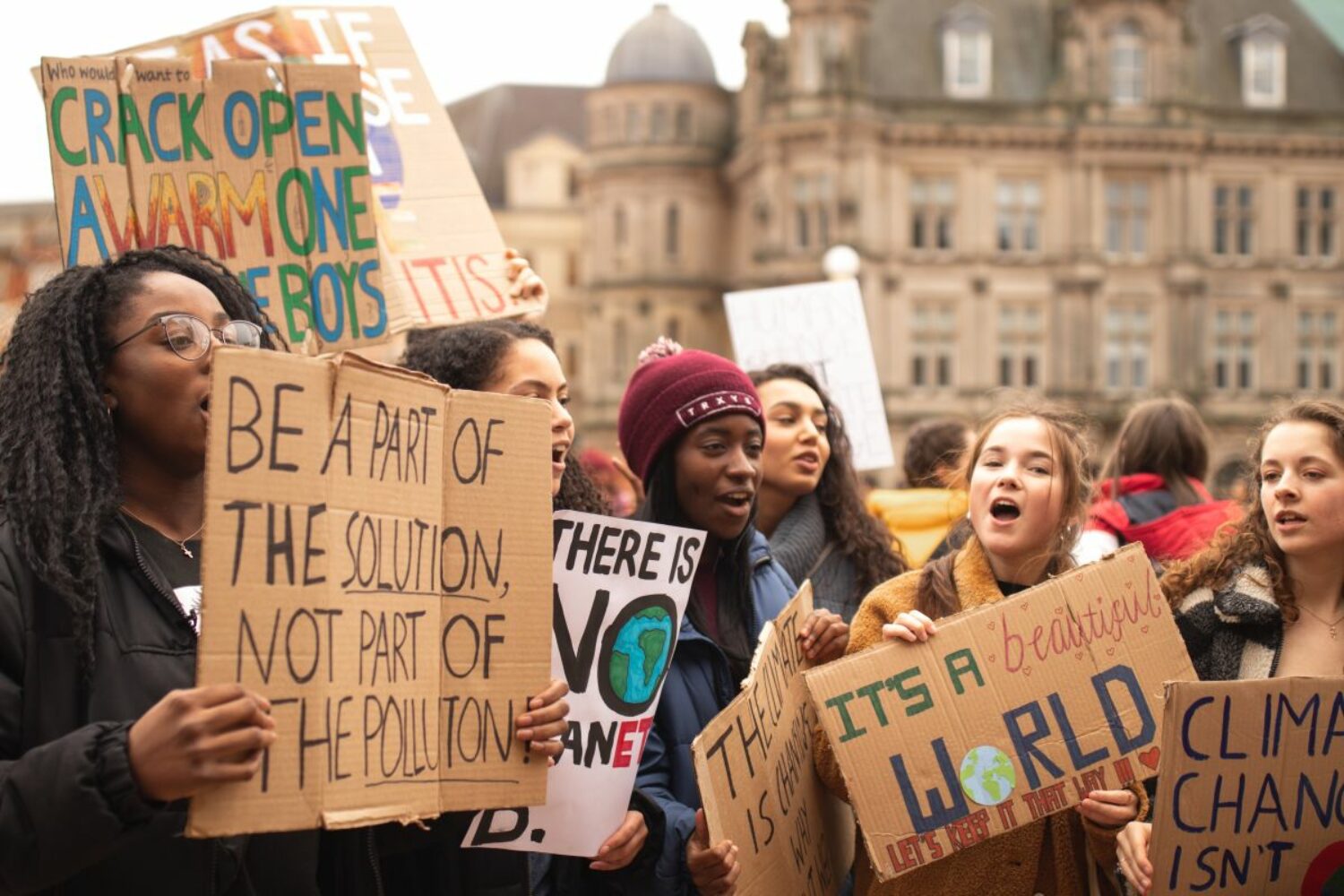
Students noted that reading about environmental solutions made them feel more empowered. Image: Callum Shaw
Where does hope come into all of this? What have students said?
Hope was one of the biggest themes that emerged from students engaging with solutions journalism. The strongest category, which was consistently selected by many students, was environmental solutions. One student said: ‘If people read more positive news about the environment it might encourage them to support the cause rather than just feel defeated.’
And this point speaks to the research about hope, which shows it to be a critical ingredient for civic engagement and that it has a profound impact on driving positive social change. This is because people who believe the future can get better tend to more competently engage with negative information. They are able to use more active coping strategies that enable them to approach the problem, as well as persevere if it is not immediately solved.
Conversely, if we are hopeless, we become less inclined to make efforts towards our desired outcomes. The real drawback of lacking hope, therefore, is not just feeling depressed; it lies in the practical consequence that without hope, we won’t actively pursue the positive changes we want to see in our lives and the world around us.
What’s been most challenging in bringing this project to this stage?
The biggest challenge has been funding. As a new organisation it is difficult to get traction but I was deeply fortunate to have someone believe in this work, with the financial means to help us realise our ambition for it. Now that we have proved the concept, we hope that funding will be more available to help us scale this work.
Where do you want this project to go in the future? And what impact could it ultimately have?
The aim for this work is to create a news-literate nation that has the understanding and skills to be both reliably informed by the news but be empowered by it too.
Find out more about the News Literacy Lab here.
Main image: Courtesy of Jodie Jackson
You’re the solution that Positive News needs
Our small, dedicated team is passionate about building a better alternative to the negative news media. And there’s never been a greater urgency to our mission.
But to invest in producing all the solutions journalism that the world is longing for, we need funding. And because we work in your interests – not those of a wealthy media mogul or corporate owner – we’re asking readers like you to get behind our team, by making a regular contribution as a Positive News supporter.
Give once from just £1, or join 1,200+ others who contribute an average of £3 or more per month.
Join our community today, and together, we’ll change the news for good.
